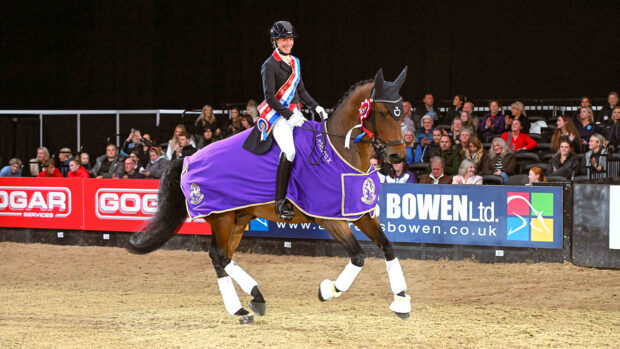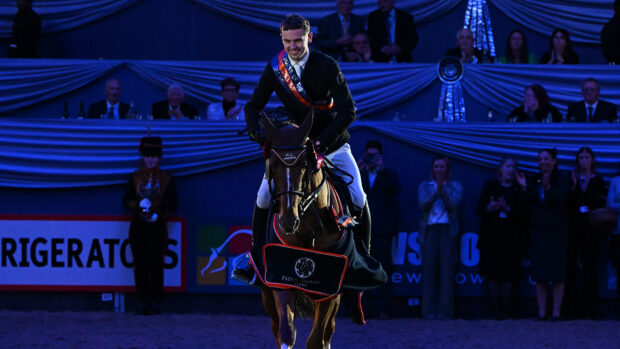With competition in the show ring as fierce as ever, Carolyn Henderson asks the experts how they pick out the fresh, future talent, when it might not be so obvious
1. Ignore condition
While it can be hard see the finished article through skin and bone, showing producer and cob specialist Lynn Russell tends to buy less mature horses so you can see their structure and build.“I prefer to buy horses in poor condition because you can see the framework and visualise how you can build on it,” she says.
2. Ask the questions
Connemara specialist and owner of the previous Horse of the Year Show (HOYS) and Olympia champion Castle Comet Vanessa Clark says it is important to not get carried away and always ask yourself if you’re really looking at the bee’s knees, or if it is actually ‘the best of a mediocre bunch’. She says: “If you’re looking at ponies in the rough in Ireland, the terrain might not be ideal to assess movement. You can see them trot through a bog, but for the ring they need to move in a flashier way.”
3. Look at what you can’t change
British Piebald and Skewbald Association chairman Lynda Lodge advises prospect buyers to look at points of the horse that can’t be changed with conditioning feed and exercise. “Movement, feet and limb conformation won’t change, but you can improve neck, topline and sloping quarters with correct work and feeding. Schooling can improve balance but if an animal has a choppy stride due to bad limb conformation, you won’t change the quality of the movement.”
5. Start with the frame
“A foal’s frame stays the same as it matures,” says show pony producer Julie Templeton. “I look at the overall structure and analyse where the pieces fit together in harmony. Then I look at the details.”
5. Look for symmetry
“When you stand back you should see symmetry,” adds Lynn. “You don’t want a big front and a weak back end. Even on a thin horse, the hip to hock line should be long enough so that the horse tracks up.”
6. Conformation, not colour
Lynda also says that while attractive marking are a bonus, make sure you are not blighted by ‘pretty patches’. She says: “Imagine if the horse was bay, if it wouldn’t be a good show horse then, it won’t be a good one as a piebald or a skewbald.”
7. Factor in purpose
As a show rider, native pony specialist Becki Penny says she looks at prospect ponies from an on-board perspective. “I look at ponies as a rider and there are things I won’t tolerate,” she notes. “If something is really upright in its pasterns it generally won’t give a good ride and will be stilted.”
8. Listen and learn
For Joyce Newbury, owner of the prolific Newoak Stud, she believes the very best way to learn about conformation is to watch from the ringside and talk to knowledgeable people. “Look at horses from all walks of life,” she says. “Don’t just look at top class animals if you want to learn.”
9. Consider height
“If you buy a youngster that will need a height certificate, be careful,” warns Vanessa. “If I’m looking for a Connemara that won’t go over 14.2hh, I won’t look at anything nudging that height at three.”
10. Good feet
Sound, quality feet are the foundation of a horse or pony’s career. Lynn says: “Good feet are essential. Look at the condition of the horn. A bad foot will be split and flaky, with no shape, whereas a good foot which just needs some attention might be long, but it won’t be flaky.”
Continued below…

‘I never expected to do it a second time’ — how a nervous companion became a double HOYS winner
The unlikely Welsh section C gelding who has done a HOYS double at eight years old...

20 signs you’re an incurable showing addict
11. Watch them move freely
“I always see a pony trot up on concrete, but I also ask them to be shown loose, especially as with a lot of newly broken ponies, you can’t see the true movement as the pony isn’t balanced,” adds Becki.
12. Trust your gut
Having that ‘feeling’ when your looking at a diamond in the rough is something you can’t teach. Julie says that even if you have the experience and the eye for picking out talent, even then, you need faith.
Read the full feature about spotting superstars and much more exclusive showing content in Horse & Hound’s showing special issue (15 March 2018), on sale now




